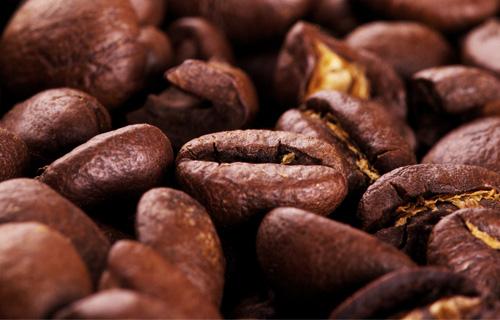The handling of Tanzanian coffee beans, the altitude of Tanzanian coffee
Follow the caf é (Wechat official account vdailycom) and found that Beautiful Cafe opened a small shop of its own.
Tanzania is an East African country south of the equator, bordered by Uganda and Kenya to the north and the Republic of the Congo, Rwanda and Burundi to the west. It is hot and humid all the year round, with an average temperature of 21-25 ℃ in most areas. Precipitation is divided into long and short rainy seasons, and the annual precipitation is abundant. The economy is dominated by agriculture, and coffee is one of the main cash crops in Tanzania. Arabica coffee and Robusta coffee are grown in Tanzania.
Mount Mount Kilimanjaro, located in northeastern Tanzania, is the highest mountain in Africa at 5895 meters above sea level. The ultra-high altitude makes the top of the mountain snow all the year round, while Tanzania's main coffee producing area is located at the foot of Mount Kilimanjaro. The area is rich in volcanic soil, which brings an adequate supply of nutrients for the growth of coffee trees. Coffee trees are generally planted at high elevations above 1150 meters, which is one of the prerequisites for Arabica to develop a high-quality flavor.
Tanzanian coffee is mostly washed. After picking, coffee farmers will send the coffee fruit to the nearest processing plant for processing. The treatment step of the water washing method is to screen and remove the impurities in the coffee fruit, then remove the coffee pulp and exocarp, and send it into the fermentation tank to remove the pectin layer on the inner pericarp by fermentation. clean and then dry.

Coffee in Tanzania is graded in the same way as in Kenya, both according to the size of coffee beans. When screening raw coffee beans through a sieve with fixed size holes, the larger the number of the sieve is, the larger the particles of raw coffee beans are. The flat beans classified by size are mainly AA+, AA, AB. In addition, PB (Pea Berry), which is more produced in Kenya and Tanzania, also has a set of sieve size standards dedicated to grading the size of round beans.
Tanzania is also often compared with its nearest neighbor Kenya. It is said that the earliest Arabica coffee in Tanzania was introduced by Christians from Kenya and is similar to Kenya in flavor characteristics. With grapefruit aromas and soft and bright acidity. However, because the economic conditions of Tanzania are worse than those of Kenya, the production conditions are not perfect. Tanzania's quality control is not strict enough, which destroys the quality of coffee in many processing links. So Tanzania cannot compete with Kenya, which is famous for its high quality.
Although it is similar to the Kenyan flavor, Tanzania as a whole is smoother and softer and belongs to the balanced type. With moderately low acidity and sweetness, dark chocolate finish, moderate mellow thickness. Compared with Kenya, which has a prominent personality, Tanzania is less hierarchical and does not give a very prominent feature after drinking, which makes people less impressive. But on the contrary, its soft and round characteristics are also more pleasing, making it easier for people who are new to coffee to accept it.
Washed beans from Kilimanjaro, Tanzania, planted in bourbon above 1800 meters above sea level. Cooked beans are moderately baked. Raw beans show yellowish green, beans particles are small and round, the particle size is more uniform. When the hand flashes, Tanzania's performance is slightly lower than that of Kenya, and it is prone to the smell of cucumbers and green beans. The acidity will be concentrated in the front, and after moderate acidity and sweetness, it will show chocolate and woody aromas.
As for the cooking method of this bean, I recommend siphon, the siphon pot will enhance the sweetness and make the flavor more concentrated, and the increase of alcohol thickness will make up for the thinness of the flavor. On the whole, the performance of the siphon pot is better than that of hand flushing.
Important Notice :
前街咖啡 FrontStreet Coffee has moved to new addredd:
FrontStreet Coffee Address: 315,Donghua East Road,GuangZhou
Tel:020 38364473
- Prev

Tanzanian coffee bean varieties, taste of Tanzanian coffee
Pay attention to coffee comment (Weixin Official Accounts vdailycom ) and find a beautiful cafe to open its own shop Tanzanian beans Source: In 1898, bourbon coffee was introduced to Kilimanjaro region of Tanzania by Catholic priests. The Kent species was introduced in 1920. So far, coffee in Tanzania has been dominated by bourbon and Kent. Coffee
- Next

What is Kopi Luwak? how does Kopi Luwak do it?
Follow Cafe (Wechat official account vdailycom) found that Beautiful Cafe opened a small shop of its own Kopi Luwak. As its name implies, the coffee made from cat droppings as raw material is called Kopi Luwak. Kopi Luwak, produced in Indonesia, is the most expensive coffee in the world. The main raw material is cat droppings. A cup of 4 oz Kopi Luwak can sell for $168.
Related
- Detailed explanation of Jadeite planting Land in Panamanian Jadeite Manor introduction to the grading system of Jadeite competitive bidding, Red bid, Green bid and Rose Summer
- Story of Coffee planting in Brenka region of Costa Rica Stonehenge Manor anaerobic heavy honey treatment of flavor mouth
- What's on the barrel of Blue Mountain Coffee beans?
- Can American coffee also pull flowers? How to use hot American style to pull out a good-looking pattern?
- Can you make a cold extract with coffee beans? What is the right proportion for cold-extracted coffee formula?
- Indonesian PWN Gold Mandrine Coffee Origin Features Flavor How to Chong? Mandolin coffee is American.
- A brief introduction to the flavor characteristics of Brazilian yellow bourbon coffee beans
- What is the effect of different water quality on the flavor of cold-extracted coffee? What kind of water is best for brewing coffee?
- Why do you think of Rose Summer whenever you mention Panamanian coffee?
- Introduction to the characteristics of authentic blue mountain coffee bean producing areas? What is the CIB Coffee Authority in Jamaica?

